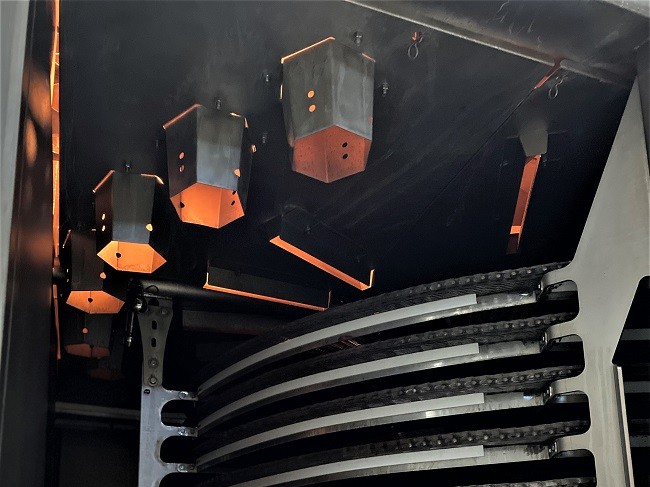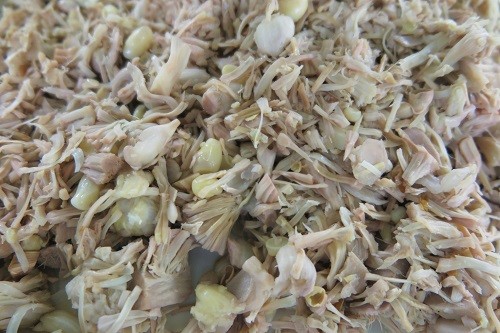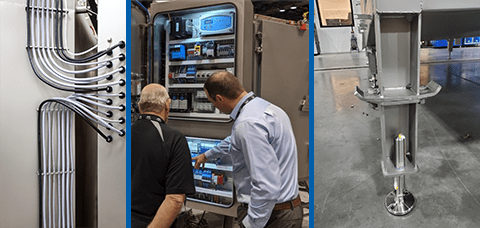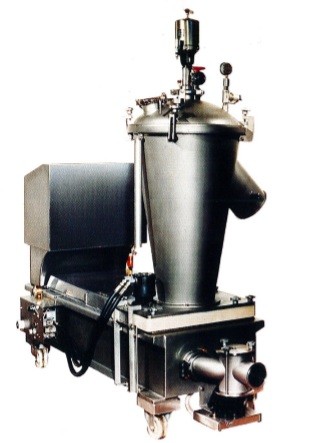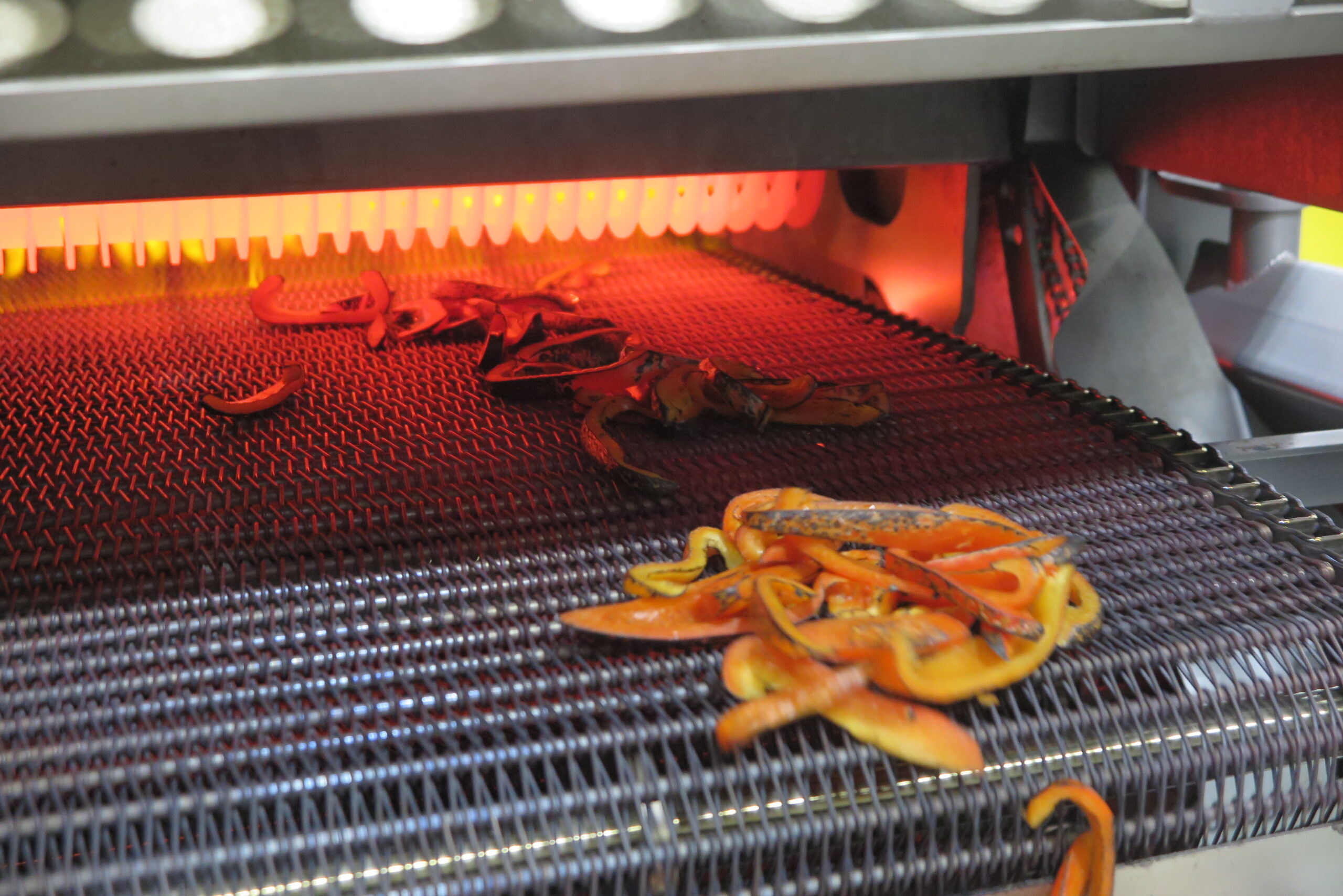Comfort foods have been on the minds of many adults these past few years, and recent surveys show that the pandemic-driven comfort food trend will continue into 2022. Classic comfort foods like chicken wings, browned lasagnas, and baked mac n’ cheese (among others) are anticipated to be popular foods this year. Customers want the convenience of microwavable food that reheats quickly but also has the browned surface appearance of being oven-baked or roasted. As the trend for comfort foods and ready-to-eat options continues to stay strong, this marks the need for food processors to provide consistent, aesthetically appealing results from their food processing equipment.
Customers are often attracted to food products by the picture on the package: it’s a positive customer experience to find that their ready-to-eat food product looks just like it does on the packaging. Consistently providing high food quality that meets customer expectations can result in customer retention, and studies have shown that a 5% increase in customer retention can lead to an increase in profits by 25% to 95%. Food processors seeking to retain their customers by satisfying consumer cravings and expectations will benefit from understanding the science of impingement cooking to provide consistent surface browning results on many value-added food products.
The Science of Impingement
Cooking with impinged air is a thermal technique which utilizes high velocity air directed at a product’s surface to accelerate surface browning by effectively removing the product’s boundary layer to result in higher rates of heat transfer. Heating a product at this rate enhances moisture retention, which typically leads to improved overall reheat quality of the product and higher yields for food processors. Impingement can also be used in combination with super-heated vapor to speed up the browning process. The principal components of an impingement system include a plenum (air box), a ventilation and exhaust mechanism, and a heating system (whether direct or indirect) to heat the air.
Browning on the surface of a product is a result of the Maillard reaction, which occurs around 265°F (130°C) and achieves a roasted flavor and a nicely browned surface at around 300°F (150°C). It is important that an impingement system is designed to bring the surface of the product up to this temperature quickly and with control over how much heat is applied: prolonged exposure to temperatures over 350°F (175°C) can lead to mutagens and toxic compounds developing in the product. Additionally, prolonged exposure can negatively impact the reheat quality of the food product from excessive moisture loss.
Impingement Speeds Up Cook Time
The design of impingement systems makes impinged air ideal for product surfaces that are not uniform, as this technique can develop uniform color across both flat and uneven product surfaces. Surface browning occurs where the impinged air is directed, which means that uniform color can be developed on the top, bottom, and all sides of the product. This means that impingement cooking produces faster results for various air-fried breaded products, such as chicken nuggets or breaded chicken tenders. High velocity impinged air yields a crispy and crunchy surface texture in less time than in traditional convection ovens. The uniform application of impinged air also prevents shadowing, which can occur with radiant heat sources, such as with infrared cooking solutions.
For non-breaded products, such as marinated proteins, pork carnitas, and deli turkey logs (among others), impingement air can produce surface browning in less time than the browning would develop in a standard convection oven. Tests have shown that large meat products can be cooked at up to 45% shorter cooking times and result in more uniform surface browning when impingement is used. Meat is cooked faster and loses less weight during impingement cooking than in other hot air cooking methods. Smaller pieces of meat cook much more quickly with impingement heating, which can make surface browning a bit more challenging for smaller meat products cooked at the same temperature as an oven without impingement.
Marlen’s Impingement Solutions
The Marlen Rapidflow Oven and Industrial Air Fryer features a new impinging airflow design. Unique to this linear impingement oven is vertical air circulation, directionally downward upon the product or upward through the bottom of the belt. Touchscreen controls allow food processors to alter multiple parameters, including the velocity of the impinged air, temperature, and humidity control. Such features enable food processors to better control the appearance of their product, and to quickly switch between product recipes on the fly.
Most recently, this impinged air technology has been adapted for use in a Marlen Spiral Oven. The impingement zone is located above the top belt tier of the spiral (just prior to exiting the oven). The impingement zone is a dedicated section of the oven where directionally downward airflow “wind” is blown upon the surface of the product to produce surface browning effects. Impingement nozzles in this zone are energized by a circulation fan in the heat chamber; the resulting pressurized air is forced through air ducts located above the product on the final belt tier. The impingement nozzles can be adjusted to dial in the effect and balance airflow across the belt for optimal results on a variety of products including CPET ready-meal trays and ready-to-eat foods.












